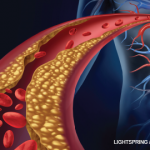A physician assistant (PA) sees a 72-year-old female patient for a routine follow-up visit. The patient was previously seen by the rheumatologist, who diagnosed her with osteoarthritis and initiated treatment.
The patient is currently on celecoxib and ranitidine and reports that her right knee has been more swollen and stiff in the past three weeks. She had an intraarticular injection of her knee six months ago, with marked improvement in pain and swelling. The patient also mentions that she has abdominal pain and nausea after she takes the celecoxib and has never experienced this before.
On examination, the patient is alert and oriented. Vital signs are normal. Height is 5’7”, weight is 140 pounds, and body mass index is 21.9. Head, eye, ear, nose, and throat exam is normal. There is no lymphadenopathy and her lungs are clear. Her heart is regular rate and rhythm, no murmurs or friction rubs. She has good peripheral pulses and her abdomen is soft, non-tender, and had no mass or hepatosplenomegaly.
The patient’s physical examination is remarkable for a large effusion of the right knee. The physician is not available to examine the patient at this time, so the PA explains therapeutic options to the patient, including risks and benefits of continuing treatment with celecoxib, and performs an aspiration of the right knee with Synvisc injection. The patient is taken off celecoxib.
The PA writes a new prescription for the pain and gives the patient discharge instructions on post-arthrocentesis care and follow up. The rheumatologist is in the office suite at the time the PA sees the patient, but has no direct involvement in the patient’s evaluation and management during this visit.
Considering that the patient has Medicare insurance, how would you code this?



